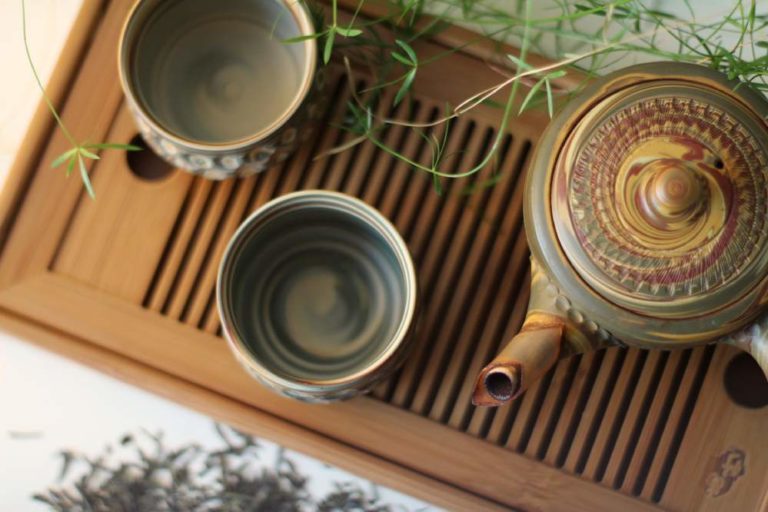How I Became a Tea Lover
The first cup of hot tea I ever had was on accident, and it wasn’t even that hot. My mom likes to make sun tea by the gallon and uses hot water from our sink faucet to start the brewing process with, like, 10 bags of Lipton iced tea. I was about eight when she started letting me have some, and I thought the gallon she just put in the window was ready – not fresh (Granted, I was kind of dumb as a kid).
It wasn’t until I was in high school that I really learned how to make hot tea by following temperature guides and steep times. Since then, my collection – and palate – have grown significantly. Now as a fully-fledged Tea Aficionado, I’d like to help your tea collection grow beyond Sleepy Time Chamomile and Lipton bags with some key accessories that will let you explore more teas from around the world.
How to Become a Tea Enthusiast
If you have no idea what I mean by “following temperature guides and steep time,” please read very carefully. If you do know, feel free to skip to the next section.
For the best brew results possible, you need to make sure that you aren’t over-or-under-steeping your leaves, and that your water is heated to the strain’s recommended temperature. Setting a timer when you brew is in your best interest – and so is investing in a water kettle with a temperature gauge. Some teas won’t come with an obvious recommendation, so use this reference table if you aren’t sure.
And please, don’t leave the bag in. It’s a recipe for over-steeped tea.
| Type | Description | Temperature Range | Steeping Time |
| White Tea | Leaves only withered and dried; very light green brew | 180-185 F / 82-85 C | 4-5 minutes |
| Green Tea | Green leaves; brews into pale hues of green and yellow | 170-180 F / 76-82 C | 3-5 min. |
| Oolong Tea | Varies widely between green to dark leaves; brews vary from green to amber | 180-190 F / 82-87 C | 1-5 min |
| Black Tea | Dark, black leaves; yields an amber brew | 208-212 F / 97-100 C | 3-5 min |
| Dark Tea | Fermented, presented in bricks | 200-212 F / 93 -100 C | 4-6 min |
| Herbal Tisanes | Will contain other botanicals like flowers and herbs | 208-212 F / 97-100 C | 5+ min |
Quick Tip About Steep Times
If you’re trying a tea for the first time, consider tasting every 30 seconds after the shortest recommended brew time to find your preferred strength. If you don’t‘ find the perfect brew, then no one will blame you for giving it to a friend.
Starting off with Loose-leaf Tea
The biggest leap any tea drinker takes is going from bagged to loose-leaf – and it’s understandable why. The convenience of pre-portioned tea is appealing, and unlike loose-leaf tea, you can count how many cups you have left before you need to stock up. But you deserve more than a standardized bag of ground leaves. Loose-leaf teas tend to produce a higher quality brew faster than bagged teas. Additionally, most premium loose-leaf varieties encourage multiple brews of the same leaves because the flavors change drastically – but only if you have the right equipment.
Things Every Tea Lover Needs – Tea Infusers
For an excellent brew every time, choose an infuser that has plenty of room for the leaves to grow (and in some cases, they grow a lot). You’ll want to expose every surface of the tea possible so it fully awakens, and that’s harder to do when your infuser is packed to the brim. They come in many styles and materials, and any tea connoisseur will slowly build a collection over time.
If you’re hoping to start your collection, you’ll want to pick one that’s universal. My go-to favorite infuser style is the brewing basket. I love to use this style because they’re easy to clean, easy to fill, and easy to adapt. Most brewing baskets are spacious, so you can brew a little tea or a lot of tea, and they’ll fit in most mugs, pots, and to-go cups. If you can, I recommend one with a lid that doubles as a drip-off tray.
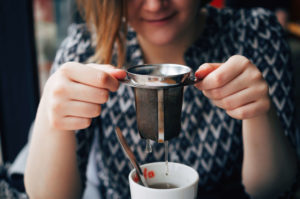
Bonus reason for basket infusers: they’re perfect for storing leaves you’ve brewed once or twice before. If you’ve only brewed a leaf once or twice, they have about a 24-hour period to be reused. Do not rebrew if they smell off.
Tea Storage to Keep Your Fancy Tea Collection Fresh
Tea is delicate, and if not stored properly, the leaves can go stale and drastically reduce in quality. If you ever think “hey this kind of tastes like metal” then your tea has gone very stale. Keep your leaves in a dark cabinet so they’re light-tight, and make sure your tea canisters have an airtight seal.
The best tea canisters will be tall, skinny, and come with two lids. The double lid ensures that excess air is pushed out, and no new air can enter. If you’re storing your tea in a dark place (like a cabinet or in a box), a mason jar will do the trick as well. If you order from a reputable tea shop, you can even reuse the original packaging for short-term storage.
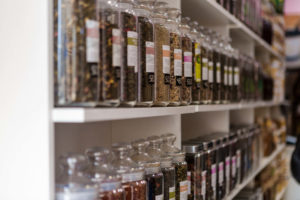
Most stores will display their tea in glass canisters so you can see the leaf shape before buying, but this is often only when they’re getting rid of stock quickly.
Tea Serving
All Tea comes from one plant, the Camellia sinensis. There are two main varieties of that plant, the Chinese sinensis and the Indian assamica (from the region it grows, Assam). The Chinese plant is known for being delicate and complicated, while the Assam plant is known for its stronger flavor withstanding harsher growing environments. As each of these variants and their offspring took root in the lives of people near and far, tea began to express itself in a new way – through an astonishing variety of cultural norms, traditions, and rituals that still blossom today in myriad ways. This guide is by no means a complete summary of tea in the world, but I will introduce you to 2 common styles.
What Tea Accessories do I Need to Serve Tea?
The Western-style of tea service, also called the English style, is centered around a teapot and teacups and is most commonly used for black teas, like Earl Grey. The porcelain or bone-china pot is large enough to hold multiple cups of tea for multiple people. Sugar and cream are often provided as part of the service because everyone is encouraged to make the tea to their liking.
I tend to only use the English style when serving tea at near boiling, and I like having a good pot handler available to protect my table. The saucers and handles of the cup help keep your hands from getting too hot, and the large quantity in the pot keeps the tea at an ideal temperature. Pricing can range from very affordable to very expensive; however, a good midrange pot will last you a lifetime.
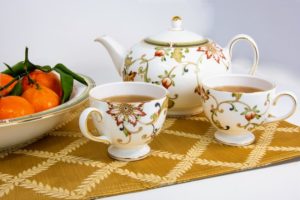
Most non-tea drinkers might think of a children’s tea set when they think of western-style service. While a fun introduction to manners, please do not use a children’s playset for tea.
Chinese Tea Sets and Gongfu Cha for the Advanced Tea Drinker
If you want to really dig into the experience of preparing and enjoying tea, the eastern style is the best way to have the most control over the brewing process. Gongfu Cha (literally “Kung Fu Tea”) is focused on perfecting every part of the tea for the best flavor possible by using a combination of Yixing Zisha (purple clay) teapot, Gaiwan, decanter (also called a fairness cup), and tasting cups. Additionally, Gongfu tea brewing takes place on a tea table, a slate of wood that catches all the tea spillage.
The Must-Have Tea Accessories for Expanding Your Selection – Gaiwan and Fairness Cup
This tool doubles as an infuser and a cup so you can worry less about the dishes and more about the tea. Brewing this way is faster than a teabag, and it’s easy to share with your friends when you combine it with a fairness cup and tasting cups. While you can purchase the Gaiwan, fairness cup, and tasting cups separately, there are excellent all-in-one travel sets available.
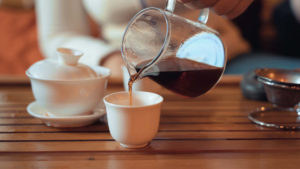
When starting off, select a thin, porcelain fairness cup with white/pale coloring on the inside so you can see the color of the brew.
The Most important Tea Accessory for All Levels
People. Drinking and appreciating tea solo is how you can hone your skills and develop your palate, but without the social aspect, you’re missing out. Tea ceremonies are built around enjoying it with other people, and if you don’t have the space to host, or need to make room for more tea, we’re here to help. With climate controlled units and secure access to your favorite brewing tools, you can make your own teapot rotation. Use our Self Storage Calculator to find out how much space you’ll need, estimating two pots for a small box, and a full set taking up a medium box. Then when it’s time to expand, you can rent online anytime for our best deals.


